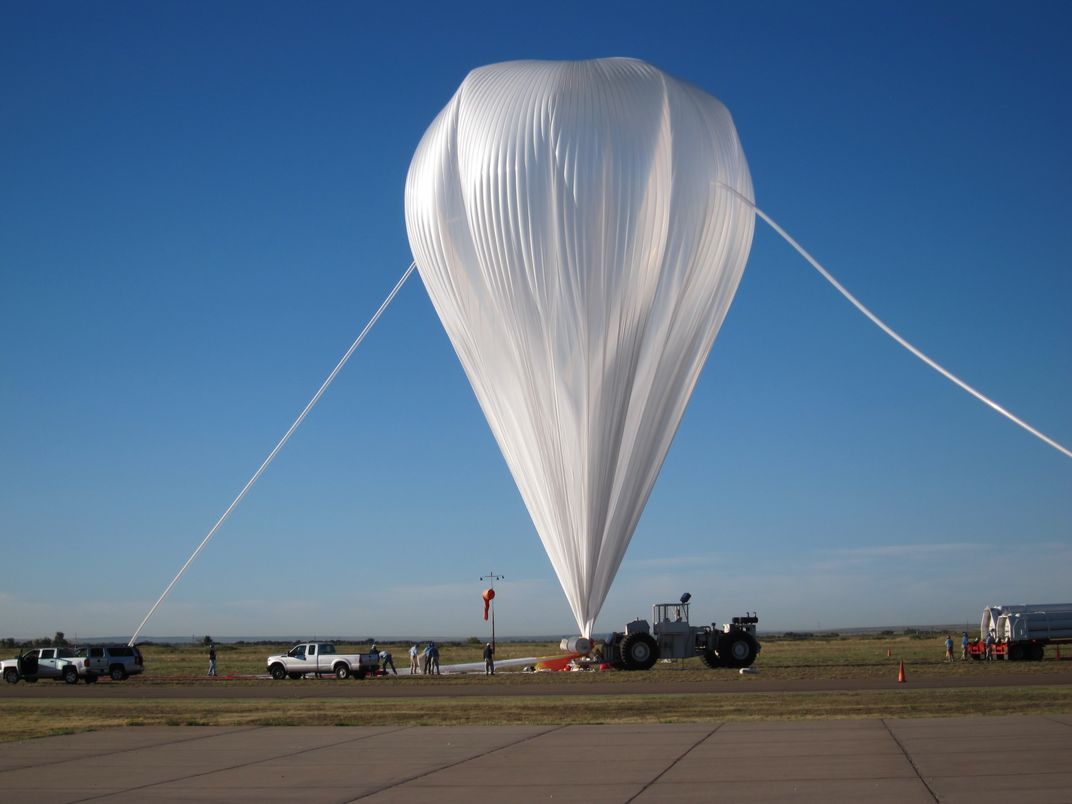Living Bacteria Are Riding Earth’s Air Currents
The high-flying microbes can travel across the globe, spreading disease or even changing climates
/https://tf-cmsv2-smithsonianmag-media.s3.amazonaws.com/filer/3e/9a/3e9a00d9-3631-41bf-8bf6-c83be91bccd0/19951457294_c3b239ff7c_o.jpg)
Considering the prevailing winds, David J. Smith figured the air samples collected atop a dormant volcano in Oregon would be full of DNA signatures from dead microorganisms from Asia and the Pacific Ocean. He didn’t expect anything could survive the journey through the harsh upper atmosphere to the research station at the Mount Bachelor Observatory, at an elevation of 9,000 feet.
"I thought we would basically be collecting nothing but dead biomass," says Smith, a research scientist with NASA's Ames Research Center.
But when his team got to the lab with the samples, taken from two large dust plumes in the spring of 2011, they discovered a thriving bunch of hitchhikers. More than 27 percent of the bacterial samples and more than 47 percent of the fungal samples were still alive.
Ultimately, the team detected about 2,100 species of microbes, including a type of Archea that had only previously been isolated off the coast of Japan. “In my mind, that was the smoking gun,“ Smith says. Asia, as he likes to say, had sneezed on North America.
Microbes have been found in the skies since Darwin collected windswept dust aboard the H.M.S. Beagle 1,000 miles west of Africa in the 1830s. But technologies for DNA analysis, high-altitude collection and atmospheric modeling are giving scientists a new look at crowded life high above Earth. For instance, recent research suggests that microbes are hidden players in the atmosphere, making clouds, causing rain, spreading diseases between continents and maybe even changing climates.
"I regard the atmosphere as a highway, in the most literal sense of the term," Smith says. "It enables the exchange of microorganisms between ecosystems thousands of miles apart, and to me that’s a more profound ecological consequence we still have not fully wrapped our heads around."
Airborne microbes potentially have huge impacts on our planet. Some scientists attribute a 2001 foot-and-mouth outbreak in Britain to a giant storm in north Africa that carried dust and possibly spores of the animal disease thousands of miles north only a week before the first reported cases.
Bluetongue virus, which infects domestic and wild animals, was once present only in Africa. But it's found now in Great Britain, likely the result of the prevailing winds.
Scientists examining the decline of coral reefs in near-pristine stretches of the Caribbean are pointing at dust and accompanying microbes, stirred up during African dust storms and carried west, as the culprit. A particular fungus that kills sea fans first arrived in 1983, researchers say, when a drought in the Sahara created dust clouds that floated across the Atlantic.
In west Texas, researchers from Texas Tech University collected air samples upwind and downwind of ten cattle feedlots. Antibiotic resistant microbes were 4,000 percent more prevalent in the downwind samples. Philip Smith, an associate professor of terrestrial ecotoxicology, and Greg Mayer, an associate professor of molecular toxicology, said the work establishes a baseline for further research.
They have completed a study of viability to be released in early 2016 and want to look at the questions of how far the particles travel and whether resistance can be transmitted to native bacteria. Antibiotics, Mayer notes, existed in nature long before humans borrowed them. But what happens when they are concentrated in places, or spread on the wind?
What's clear is there are far more viable microbes in far more inhospitable places than scientists expected.
Researchers from the Georgia Institute of Technology, supported by a NASA research grant, examined air samples collected by a plane flying during hurricanes miles above Earth. They found that living cells accounted for about 20 percent of of the storm-tossed microbes.
"We were not expecting to find so many intact and alive bacterial cells at 10,000 meters," says Kostas Konstantinidis, a microbiologist at the Georgia Institute of Technology.
Konstantinidis and his team are particularly interested in how microbes contribute to cloud formation and precipitation. Nuclei in bacteria in the air initiate condensation. Some scientists now believe microbes may play a major part in meteorology. "They have great potential for affecting cloud formation and the climate," Konstantinidis adds.
Meanwhile, Smith is intrigued by how microbes survive or perhaps repair themselves after days-long journeys in the harsh radiation of the upper atmosphere. A NASA project, EMIST (Exposing Microorganisms in the Stratosphere), spearheaded by Smith, has twice carried spore-forming bacteria to 125,000 feet above the New Mexico desert on a balloon to investigate their survival.
For NASA, the work is related to planetary protection. If a spacecraft contaminated with Earth bacteria reaches Mars—which has conditions similar to Earth's stratosphere—and the bacteria survive, it could complicate our search for evidence of life on Mars or even kill off native microbes, if they exist.
But it also has far broader possibilities. Like earlier researchers who explored the rainforest searching for wonder drugs, researchers may one day find remedies in the miniscule inhabitants of the atmosphere. Maybe atmospheric bacteria can offer us the ultimate sunscreen and protection against radiation.
“It's extraordinary that an organism that can survive such a harsh environment is in many cases a single cell," Smith says. “How are they doing what they are doing?”

/https://tf-cmsv2-smithsonianmag-media.s3.amazonaws.com/accounts/headshot/jim-morrison-240.jpg)
/https://tf-cmsv2-smithsonianmag-media.s3.amazonaws.com/accounts/headshot/jim-morrison-240.jpg)